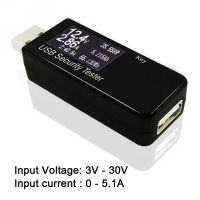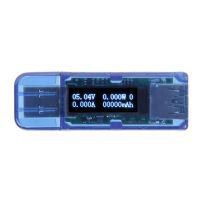Hello,
I wanted to ask users with such equipment if it is able to determine the similar capacity of a Li-ion cell because I would like to use it mainly to measure capacity because other measurements are going to be done with a multimeter. I noticed that such a USB meter is available in 2 versions, for USB 2.0 it is BTE-147, while for the USB 3.0 version I did not find the manufacturer's name. Below are illustrative photos.
USB 2.0

USB 3.0

At first glance, they differ in the way of mounting the through-hole and surface-mounted displays.
Capacity measurement I need to measure GSM battery status, real capacity of powerbanks, Li-ion 18650 cells, etc.
If someone has a code name of the USB 3.0 meter, I would ask for it, it will be easier to find.
I wanted to ask users with such equipment if it is able to determine the similar capacity of a Li-ion cell because I would like to use it mainly to measure capacity because other measurements are going to be done with a multimeter. I noticed that such a USB meter is available in 2 versions, for USB 2.0 it is BTE-147, while for the USB 3.0 version I did not find the manufacturer's name. Below are illustrative photos.
USB 2.0

USB 3.0

At first glance, they differ in the way of mounting the through-hole and surface-mounted displays.
Capacity measurement I need to measure GSM battery status, real capacity of powerbanks, Li-ion 18650 cells, etc.
If someone has a code name of the USB 3.0 meter, I would ask for it, it will be easier to find.




